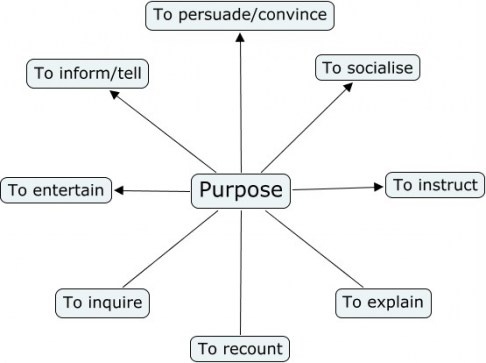
Activity remained relatively robust throughout the third quarter, with global GDP expanding at an annualized rate of 3½ percent-only slightly worse than forecast in the September 2011 WEO. Growth in the advanced economies surprised on the upside, as consumers in the United States unexpectedly lowered their saving rates and business fixed investment stayed strong. The bounce back from the supply-chain disruptions caused by the March 2011 Japanese earthquake was also stronger than anticipated. Additionally, stabilizing oil prices helped support consumption. These developments, however, are not expected to sustain significant momentum going forward. Further, below the middle point ‘B’ of the demand curve, elasticity of demand is less than one.

Typically, demand for inferior goods is mainly driven by people with lower incomes or when there’s a contraction in the economy. Some customers may not change inferior goods examples india their behavior and continue to purchase inferior goods. Conversely, the demand for inferior goods increases when incomes fall or the economy contracts.
What Is an Inferior Good?
It is important to note that the monopolist will never produce the output at any level, where MR is negative. If he does so, his total revenue will fall as output increases. In other words, the monopolist can earn larger profits by restricting the output. Further, since MC cannot be negative, equality of MC and MR (equilibrium condition) cannot be achieved, where MR is negative. Another example can be of use of public transportation, when income is low people use more of public transportation which is not the case when their income increases. However, when their income increases, they are more likely to purchase a car instead of relying on public transportation.
How to Start Your Music Retail Store business this World Music Day … – Indian Retailer
How to Start Your Music Retail Store business this World Music Day ….
Posted: Tue, 20 Jun 2023 05:21:17 GMT [source]
If that parent or friend’s income has risen over the years, it’s likely that they don’t drive that type of car anymore. As promotions and pay increases add up at work, these individuals will increase their demand for more normal or luxury vehicles. Examples of inferior goods include generic or store-brand products, fast food, low-end clothing, and public transportation. Conversely, when income levels decrease, the demand for inferior goods increases as consumers become more price-sensitive and look for cheaper alternatives. Inferior goods are items for which consumer preferences decrease as consumers earn more. Low-cost products that aren’t as good as “normal goods” or “necessities” are often food and household items that aren’t branded.
London Interbank Offered Rate (percent) 7
When consumer income increases, the demand for high-end vehicles increases and when consumer income decreases, the demand for cheap vehicles increase. The most common example of inferior goods is inexpensive food. This can include fast food, bologna, frozen dinners, instant noodles, canned vegetables, generic grocery products, etc. These are products that most consumers would rather not buy if they had the income to buy more expensive alternatives. Although some individuals may prefer inexpensive food, more expensive alternatives generally offer more satisfaction to the buyer.
- In fact, as consumers’ disposable cash decreases, they typically spend more on Giffen goods than other inferior goods.
- Demand for inferior goods is commonly dictated by consumer behavior.
- Examples- are clothes, taxis, organic food, high-end restaurants, organic pasta, noodles, whole wheat, electronics, home appliances, and food staples.
- Therefore, no rational monopolist will produce on that portion of the demand curve, where MR is negative, i.e., the elasticity of demand is less than one?
- Grocery store brand products provide an insightful example of how inferior goods are not necessarily of lower quality.
- Examples of these would be goods typically used by the lower socio-economic classes.
Some of the clearest examples of inferior goods can be found in cars, cheap electronics, generic food and public transportation. Conversely, as income levels decrease (moving down along the Y-axis), the quantity demanded increases (moving right along the X-axis). Now that we’ve established what inferior goods are and how they differ from normal goods, what are some examples? 5 common examples of inferior goods include inexpensive food, cheap cars, public transportation, generic brands, and payday loans. Consumer buying behaviour can affect the demand for inferior goods.
Public Transportation
Due to their affordability, such goods are consumed by consumers with low income. However, when a consumer’s income increases, he or she can afford the more expensive substitutes. An inferior good is an item that is often a substitute product whose demand drops when people’s income increases. During economic prosperity, consumers may be more likely to invest in more luxury goods. If a consumer’s income drops, they are more likely to resort to activities such as buying lower quality items, generic brands, avoiding traveling, or changing eating habits.
- Food and grocery products are one of the most common examples of inferior goods.
- With zero cost of production, the monopolist has only to decide at which output, the total revenue will be maximum.
- Further, since MC cannot be negative, equality of MC and MR (equilibrium condition) cannot be achieved, where MR is negative.
- Whole wheat, organic pasta noodles are an example of a normal good.
The biggest differences between normal and inferior goods are their prices and their demand. A normal good sees a rise in demand when people make more money while an inferior good sees a drop. Inferior goods are always significantly less expensive than their normal good counterpart. Budget clothing retailers that offer lower-quality garments at affordable prices are another example. When consumers have higher incomes, they may choose to shop at higher-end retailers for more durable and fashionable clothing options.
Quality and Perception
A microeconomic law that states that, all other factors being equal, as the price of a good or service increases, consumer demand for the good or service will decrease and vice versa. These groceries are inferior products because they are no name brands at very low prices. Paul Boyce is an economics editor with over 10 years experience in the industry. Currently working as a consultant within the financial services sector, Paul is the CEO and chief editor of BoyceWire. He has written publications for FEE, the Mises Institute, and many others. Finally, consumers should be aware of their personal preferences and needs when identifying inferior goods.
What is Retail? Definition & Guide – Indian Retailer
What is Retail? Definition & Guide.
Posted: Tue, 13 Jun 2023 11:56:45 GMT [source]
For example, something as simple as fast food may be considered an inferior good in the U.S., but it may be deemed a normal good for people in developing nations. A normal good is one whose demand increases when people’s incomes start to increase, giving it a positive income elasticity of demand. If the quantity demanded of a product increases with increase in consumer income, the product is a normal good and if the quantity demanded decreases with increase in income, it is an inferior good.

